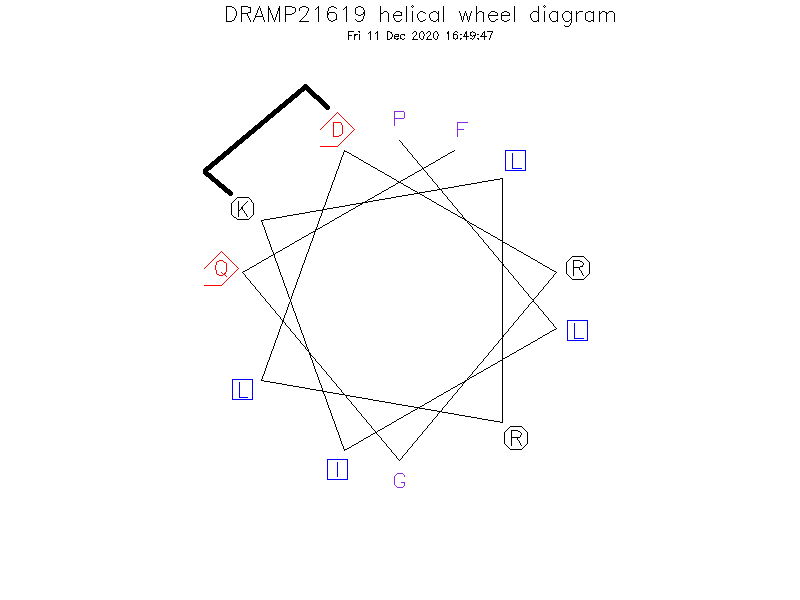-
-
-
-
-
Original Sequence
- PLILLRLLRGQF
-
Source
- Synthetic construct
-
-
Biological Activity
- Antimicrobial, Antibacterial, Anti-Gram+, Anti-Gram-
-
- Function: Antibacterial activity against Gram-positive and Gram-negative bacteria.
-
Target Organism
-
- [Ref.28921993] Gram-positive bacteria: Staphylococcus aureus (MIC > 256 μg/mL), Enterococcus faecalis (MIC > 256 μg/mL);
- Gram-negative bacteria: Escherichia coli (MIC > 256 μg/mL), Pseudomonas aeruginosa (MIC > 256 μg/mL)
-
Hemolytic Activity
-
- [Ref.28921993] It has 4.0%, 4.8%, 4.6%, 4.2% and 7.0% hemolysis against human red blood cells at 15, 20, 25, 30 and 40 μg/ml.
-
Cytotoxicity
-
- [Ref.28921993] The toxicity of sWWSP toward HEK293 and HeLa cells is much less than nonaarginine (R9) by use of flow cytometry and the peptide doesn't show any cytotoxicity at 2 μM.
-
Linear/Cyclic
- Cyclic (Stapled)
-
N-terminal Modification
- Free
-
C-terminal Modification
- Amidation
-
Special Amino Acid and Stapling Position
- Ⓚ (4) and Ⓓ (8) are cross-linked by lactam stapling through the polar amide bond of a lactam bridge.
-
-
Secondary Structure
- ①α-helix in aqueous solutions [pure water (H₂O), phosphate buffer (PB, 10 mM), and phosphate buffer with high salt (NaF, 100 mM)]. ②43% average α-helix content in various membranes environments [38% in POPC; 58% in POPC/POPG(3:1); 47% in POPC:lysoPC(9:1);
-
Structure Description
- On the other hand, sWWSP and sMAP-1 assumed an α-helical conformation in aqueous solution, in contrast to their unstructured linear countparts.
-
-
There is no predicted structure for DRAMP21619.
- Literature 1
-
Title
- Lactam-Stapled Cell-Penetrating Peptides: Cell Uptake and Membrane Binding Properties.
-
-
Reference
- J Med Chem. 2017 Oct 12;60(19):8071-8082. doi: 10.1021/acs.jmedchem.7b00813. Epub 2017 Sep 26.
-
Author
- Marco J Klein, Samuel Schmidt, Parvesh Wadhwani, Jochen Bürck, Johannes Reichert, Sergii Afonin, Marina Berditsch, Tim Schober, Roland Brock, Manfred Kansy, Anne S Ulrich

